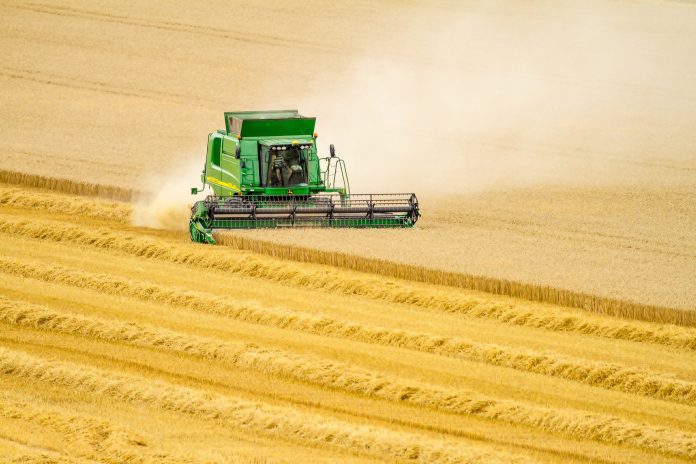David Green, Executive Director of the U.S. Sustainability Alliance navigates the complex task of global food production sustainability, illustrating that there is more than simply one approach
The fictional detective Sherlock Holmes was an ace at solving inexplicable crimes. Holmes often found the answers by simply linking information and context. For example, when investigating a murder and the disappearance of a racehorse in The Adventures of Silver Blaze, he is told that the guard dog “did nothing in the nighttime.” To Holmes, this “curious incident” was out of kilter with a guard dog’s behaviour, and the reason that the dog was silent was because it recognised the intruder. The ‘curious incident’ was solved by considering the twin aspects of information and context.
Recently, the UN Food Systems Summit (23 September 2021), the EU’s Farm to Fork (F2F) strategy, and the U.S. Coalition of Action on Sustainable Productivity Growth for Food Security and Resource Conservation have all set out ambitious plans on how the world’s food system could be made more sustainable. Amid this flurry of ideas on how best to adapt the world’s agriculture, it is perhaps propitious to look to the Holmes example, so as to avoid pre-judging the data in all these plans and seek to consider the context in which they are formed.
The end goal of sustainable food production is indeed laudable. But the road to reaching that goal could become ever longer if there is a failure to understand that differing pathways will need to be taken. And this is where having relevant context will be important.
For many, the EU’s prescriptive Farm to Fork ambitions risk hampering food production by restricting inputs such as pesticides and fertilisers and limiting the use of some innovative production technologies being adopted elsewhere.
European farmers, and several impact studies (1) argue that curtailing inputs and innovation, together with other policies, will have a negative impact on their ability to produce efficiently and competitively, never mind sustainably. They believe that the F2F aspirations are out of context with the primary end of food production – namely the reality at the farm level, and are also concerned about other issues such as food price rises and increased imports.
Arguably, the EU’s approach does leave more questions than answers – particularly for those exporting countries from outside the bloc. Is there to be no accounting for different roads to sustainability? Is there no recognition of different farming, climatic and geopolitical approaches? Is imposing EU regulatory restrictions on exporting countries really compliant with international trade rules?
Such questions are understandable but also need to be considered within the context of what the European Union is. It is the world’s largest trading bloc of some 450 million consumers with different languages, customs and cultures, spread across 27 countries that voluntarily handed over sovereignty in many policy areas. For sure the policies and politics of the EU are aspirational, yet they are often proposed as such to allow reasonable and workable compromises to be reached following much internal debate and consultation. Today, the F2F is an overall strategy, and the implementation, legislation and policies are yet to be developed and negotiated.
“The end goal of sustainable food production is indeed laudable. But the road to reaching that goal could become ever longer if there is a failure to understand that differing pathways will need to be taken.”
The other major global trading region involved in the sustainability quest – the United States, seeks an inclusive, voluntary approach which appreciates the role and need for innovation and technology to help meet sustainable production. This strategy was outlined by U.S. agriculture secretary Tom Vilsack at the UN Food Systems Summit and amplified by him when announcing the formation of a Coalition for Sustainable Production Growth (SPG Coalition). This initiative envisions global, multi-sector action to “accelerate the transition to more sustainable food systems through agricultural productivity growth that optimises the social, economic and environmental dimensions of sustainability.”
In line with much that has been promoted about global sustainability, the SPG Coalition has lofty ambitions. Yet, it is based on what appears to be a more practical and voluntary way forward appreciating that many countries have their own definitions, approaches, and policies on sustainable agriculture. This would allow countries and jurisdictions, many of which have made great strides on sustainable agriculture, to discuss and agree on the compatibility and mutual recognition of the sustainability processes of different agricultural production systems and the context in which they operate. This is very different from an arbitrary one-size-fits-all pathway.
In early November 2021, a joint statement from U.S. Agriculture Secretary Tom Vilsack and his counterpart Janusz Wojciechowski pledged to increase transatlantic collaboration on making agriculture greener. Both said they shared the same vision albeit with different approaches. Although short on detail, perhaps this so-called transformational initiative will be the start of real progress in mutual recognition. As the debate on reaching some form of global food production sustainability intensifies, the key is recognising and appreciating that there are indeed many roads leading to the same goal. (2)
References
- (1) Viewpoint: ‘It’s time to listen to what the data say’ — Agricultural biotechnology industry issues joint statement challenging Europe’s proposed Farm to Fork Green Deal – Genetic Literacy Project https://geneticliteracyproject.org/2021/10/21/viewpoint-its-time-to- listen-to-what-the-data-say-agricultural-biotechnology-industry-issu es-joint-statement-challenging-europes-proposed-farm-to-fork- green-deal1/
- (2) https://www.usda.gov/media/press-releases/2021/11/03/us-eu- launch-collaboration-platform-agriculture











